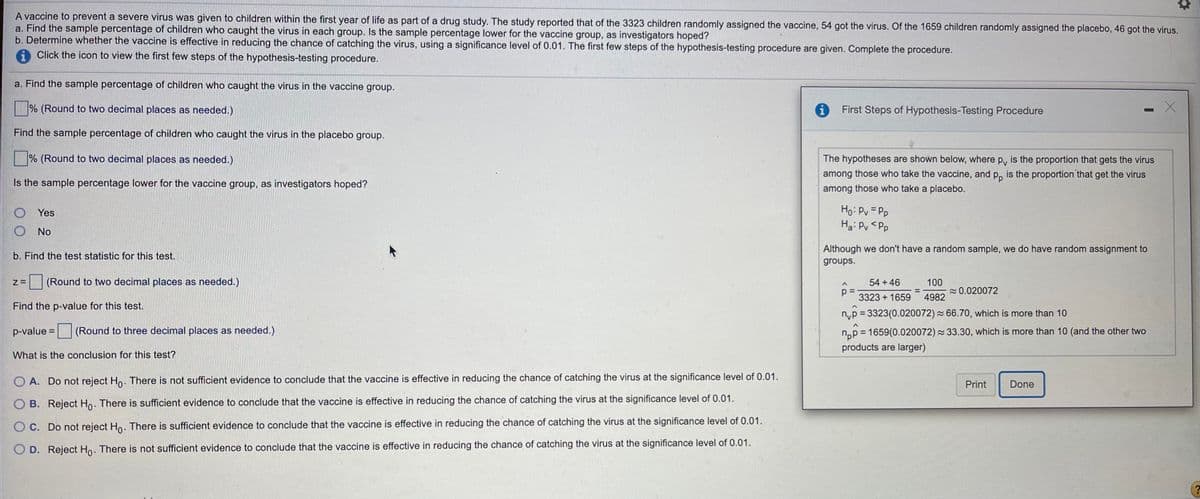A vaccine to prevent a severe virus was given to children within the first year of life as part of a drug study. The study reported that of the 3323 children randomly assigned the vaccine, 54 got the virus. Of the 1659 children randomly assigned the placebo, 46 got the virus. a. Find the sample percentage of children who caught the virus in each group. Is the sample percentage lower for the vaccine group, as investigators hoped? b. Determine whether the vaccine is effective in reducing the chance of catching the virus, using a significance level of 0.01. The first few steps of the hypothesis-testing procedure are given. Complete the procedure. a Click the icon view the first few steps of the hypothesis-testing procedure. a. Find the sample percentage of children who caught the virus in the vaccine group. % (Round to two decimal places as needed.) O First Steps of Hypothesis-Testing Procedure Find the sample percentage of children who caught the virus in the placebo group. % (Round to two decimal places as needed.) The hypotheses are shown below, where p, is the proportion that gets the virus among those who take the vaccine, and p. is the proportion that get the virus among those who take a placebo. Is the sample percentage lower for the vaccine group, as investigators hoped? O Yes Hg: P = Pp H P,
Angles in Circles
Angles within a circle are feasible to create with the help of different properties of the circle such as radii, tangents, and chords. The radius is the distance from the center of the circle to the circumference of the circle. A tangent is a line made perpendicular to the radius through its endpoint placed on the circle as well as the line drawn at right angles to a tangent across the point of contact when the circle passes through the center of the circle. The chord is a line segment with its endpoints on the circle. A secant line or secant is the infinite extension of the chord.
Arcs in Circles
A circular arc is the arc of a circle formed by two distinct points. It is a section or segment of the circumference of a circle. A straight line passing through the center connecting the two distinct ends of the arc is termed a semi-circular arc.
Help!

Trending now
This is a popular solution!
Step by step
Solved in 2 steps




